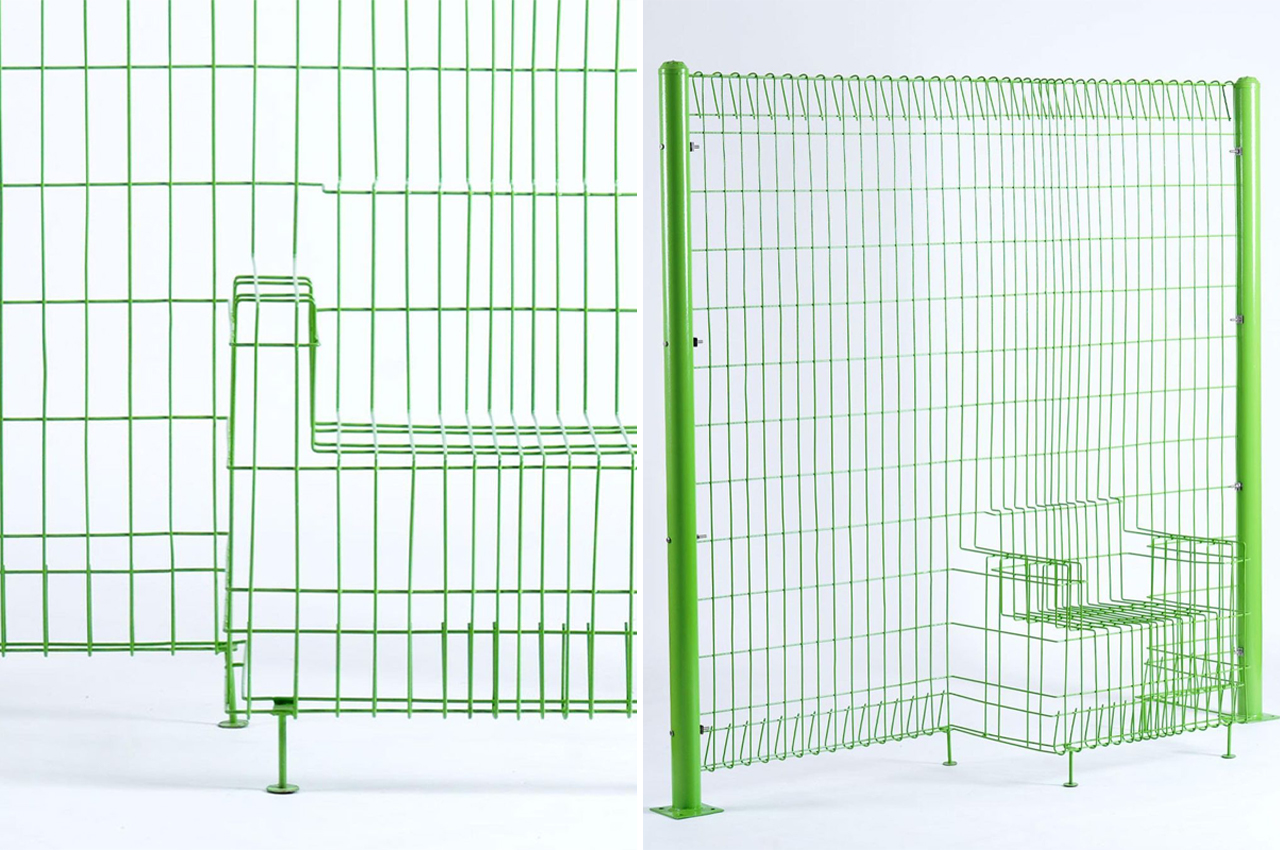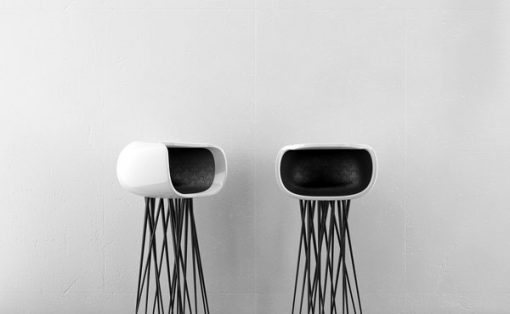
The Invisible Chair from student designer Lee Hyokk is a chair that’s constructed from and incorporated into a steel-link fence.
For centuries, designers have been redefining what chairs could look like. Forming new concepts for a piece of furniture that has been around for longer than a millennium is a big ask, but the chair’s patterned history also opens the door for daring new possibilities to emerge. Dubbed Invisible Chair, student designer Lee Hyokk constructed their chair, “that’s almost invisible,” out of a chain-link fence.

Fences generally require a lot of building material to be made and once finalized, fences are merely designs “that exist for objects other than themselves,” as Lee describes. Hoping to incorporate more than just one function into the chain-link fence, Lee noticed the design’s potential. Following intermittent periods of sketching and ideating, Lee took a small lot of chain-link fences and reorganized some wires to form the silhouette of a chair.

Malleable by design, some of the chain links that form the fence’s grids were removed or re-bent to build the shape of a small armchair. Emerging from the fence’s center area, Lee constructed a four-legged armchair out of the fence’s preexisting chain links. Camouflaged by the repetitive grid system, the built-in chair is difficult to spot unless you’re looking for it.

Describing this purposeful approach to building the Invisible Chair, Lee’s design is highlighted in an Instagram post from [@student.design], “‘Invisible Chair’ uses the characteristics of a fence to lower the accessibility of stimuli (e.g. ‘resting’). It’s difficult to recognize its existence when viewed without intentionally trying to recognize it.” Despite the chair’s seemingly anonymous presence, Lee designed it to provide a moment’s rest when one might be hard to find.
Designer: Lee Hyokk via Student Design








